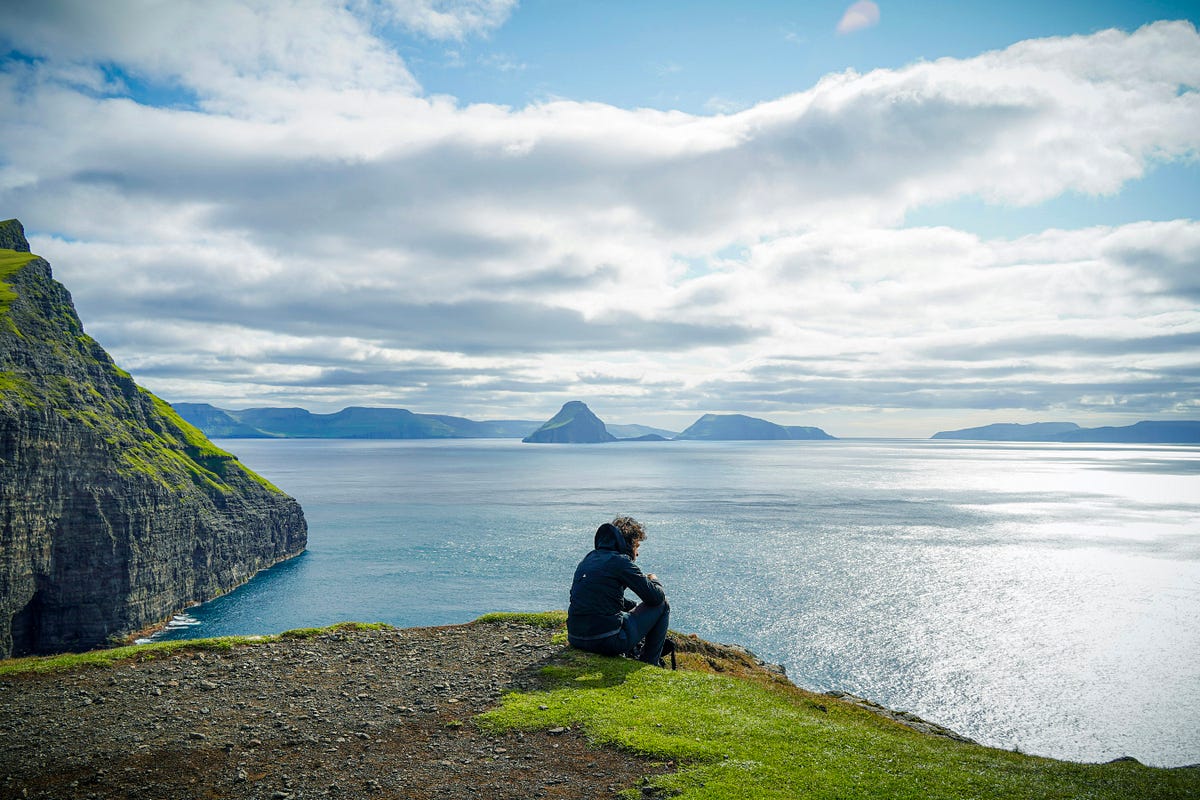
The Hidden Limits of Language in Mindfulness Practice
You do not need to leave your room.
Remain sitting at your table and listen.
Do not even listen, simply wait, be quiet, still and solitary.The world will freely offer itself to you to be unmasked,
It has no choice,
It will roll in ecstasy at your feet.
This quote from Franz Kafka almost sounds paradoxical, doesn’t it?
How can doing nothing lead to anything meaningful?
But think about it — when was the last time you truly allowed yourself to be still? To not do but simply be?
Could it be that in the quiet, when you’re no longer chasing after the world, the world comes to you?
Picture yourself sitting by a quiet stream on a crisp autumn day.
The leaves rustle gently in the breeze, and the sound of water flows peacefully over the rocks.
Birds chirp in the distance, and your breathing aligns with the rhythm of nature.
In that moment, words seem unnecessary.
There’s nothing to describe, nothing to label — just pure experience.
This is mindfulness beyond language.
While language is one of our most powerful tools, it also has its limitations. As soon as we try to articulate an experience, we move away from it.
Mindfulness invites us to explore the present moment without relying too heavily on words, which can often complicate our understanding.
The Power and Pitfalls of Language
Language allows us to communicate thoughts, emotions, and ideas. It is the foundation of human connection and culture.
Yet, as soon as we start using words to describe an experience, we distance ourselves from the experience itself.
As philosopher Ludwig Wittgenstein once said,
The limits of my language mean the limits of my world.
When practicing mindfulness, these limits become apparent.
Words are abstract and symbolic, but mindfulness is about direct experience — being fully present in the moment without judgment or interpretation.
Meditation: Feeling, Not Thinking
In meditation, we are often encouraged to focus on the breath or bodily sensations rather than thoughts or words.
Techniques like body scans or loving-kindness meditation foster a deeper connection with our inner experience by shifting focus away from the mind’s habitual need to analyze or label.
Instead of trying to explain or understand a sensation — such as the warmth in your hands or the coolness of your breath — you’re simply asked to feel it.
The goal is not to think about the experience but to be immersed in it. As meditation teacher and founder of MBSR (Mindfulness Based Stress Reduction) Jon Kabat-Zinn puts it-
Mindfulness means paying attention in a particular way: on purpose, in the present moment, and non-judgmentally.
Language, in this case, can be a distraction rather than a guide.
Nature: A Wordless Connection
Now, imagine walking through a dense forest, with towering trees and the smell of damp earth filling the air.
Sunlight filters through the leaves, casting soft shadows on the path.
In these moments, nature offers a direct connection to the present moment — no words needed.
Nature speaks its own silent language.
Observing the flow of water in a stream or the wind brushing through the trees can ground us in the here and now, free from the need to describe or interpret what we see.
As poet Mary Oliver writes-
in “Instructions for living a life: Pay attention. Be astonished. Tell about it.”
Sometimes, though, we can let go of the last instruction — “telling about it”
— and simply exist in awe.
Before language, thoughts were present; before thoughts, the mind was a silent witness to the flow of nature.
Artistic Expression: Beyond Words
Artistic expression is another avenue where mindfulness transcends language.
Whether painting, dancing, or playing music, these forms of expression tap into a deeper, wordless part of ourselves.
They evoke emotions and insights that language may never fully capture.
Consider the last time you were moved by a piece of music or stood in front of a striking painting.
No matter how eloquently you try to describe the feeling, words fall short.
In those moments, we experience something that exists beyond the boundaries of language.
As artist Georgia O’Keeffe said,
I found I could say things with color and shapes that I couldn’t say any other way — things I had no words for.
The Role of Silence in Mindfulness
Silence, too, plays a powerful role in mindfulness.
In our noisy, fast-paced world, silence is often hard to come by, yet it offers a profound opportunity to connect with the present.
In silence, we hear what is usually drowned out by the constant chatter of our minds.
Silence invites us to listen more closely — to our heartbeat, to our breath, to the subtle sounds of life around us. It is in this space, free from words, that we can truly tune into our inner selves and the world as it is.
As Vietnamese Zen master Thich Nhat Hanh wrote –
Silence is essential. We need silence just as much as we need air, just as much as plants need light.
Mindfulness Beyond the Bounds of Language
While language is a valuable tool, its limitations become clear in the realm of mindfulness.
Mindfulness asks us to step outside the confines of words and fully engage with our present experience because language fails to the “real”.
The next time you sit in stillness or walk through nature, let go of the need to describe or analyze.
Instead, embrace the direct experience, and you may find that mindfulness, in its truest form, exists beyond the boundaries of language.